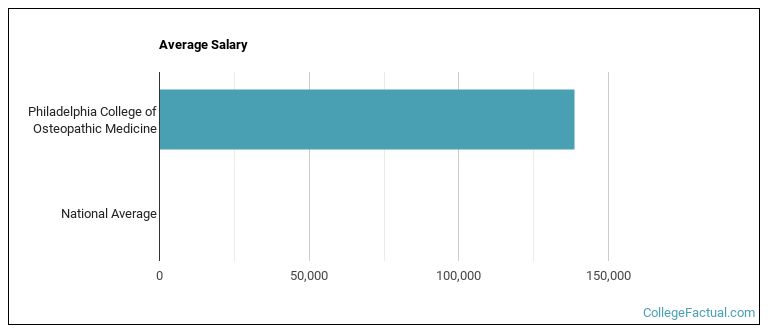 by our College Data Analytics Team
by our College Data Analytics TeamExplore the best ranked schools for the programs you are most interested in.
Philadelphia College of Osteopathic Medicine was not ranked in College Factual's 2025 Best Overall Colleges report. This could be for a number of reasons, including lack of data.
See all of the rankings for Philadelphia College of Osteopathic Medicine.
Data for the student to faculty ratio for this school has not been reported.

See which majors at Philadelphia College of Osteopathic Medicine make the most money.
Get more details about the location of Philadelphia College of Osteopathic Medicine.

Contact details for Philadelphia College of Osteopathic Medicine are given below.
| Contact Details | |
|---|---|
| Address: | 4170 City Ave, Philadelphia, PA 19131 |
| Phone: | 215-871-6770 |
| Website: | www.pcom.edu/ |
| Most Popular Majors | Bachelor’s Degrees | Average Salary of Graduates |
|---|---|---|
| Medicine | 364 | NA |
| Clinical, Counseling & Applied Psychology | 103 | NA |
| Allied Health Professions | 88 | NA |
| Pharmacy/Pharmaceutical Sciences | 86 | NA |
| General Biology | 51 | NA |
| Security Science and Technology | 48 | NA |
| Mental & Social Health Services | 40 | NA |
| Rehabilitation & Therapeutic Professions | 40 | NA |
| Public Health | 36 | NA |
| Human Resource Management | 22 | NA |
Online learning options are becoming more and more popular at American colleges and universities. Online classes are great for students who have busy schedules or for those who just want to study on their own time.
In 2022-2023, 283 students took at least one online class at Philadelphia College of Osteopathic Medicine. This is an increase from the 34 students who took online classes the previous year.
| Year | Took at Least One Online Class | Took All Classes Online |
|---|---|---|
| 2022-2023 | 283 | 73 |
| 2021-2022 | 34 | 34 |
| 2020-2021 | 62 | 62 |
| 2018-2019 | 57 | 57 |
Learn more about online learning at Philadelphia College of Osteopathic Medicine.
Footnotes
*The racial-ethnic minorities count is calculated by taking the total number of students and subtracting white students, international students, and students whose race/ethnicity was unknown. This number is then divided by the total number of students at the school to obtain the racial-ethnic minorities percentage.
References
More about our data sources and methodologies.